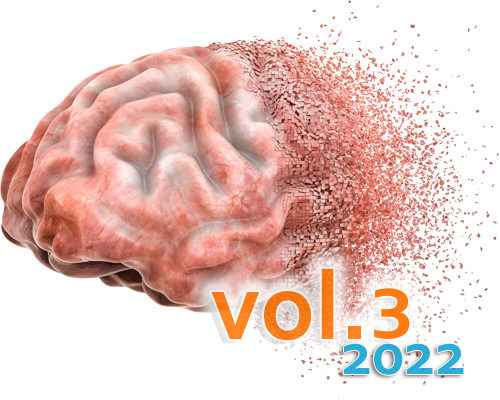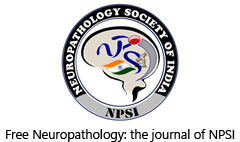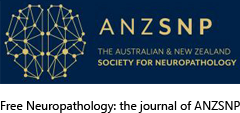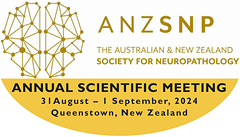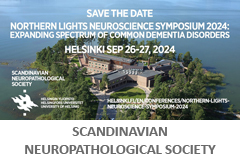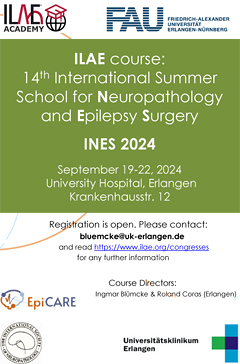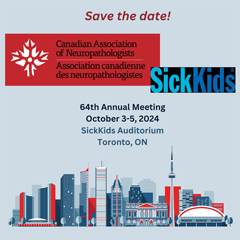Soluble brain homogenates from diverse human and mouse sources preferentially seed diffuse Aβ plaque pathology when injected into newborn mouse hosts
DOI:
https://doi.org/10.17879/freeneuropathology-2022-3766Keywords:
Amyloid-β, Tau, α-Synuclein, Seeding, Alzheimer’s disease, Lewy body dementiaAbstract
Background: Seeding of pathology related to Alzheimer’s disease (AD) and Lewy body disease (LBD) by tissue homogenates or purified protein aggregates in various model systems has revealed prion-like properties of these disorders. Typically, these homogenates are injected into adult mice stereotaxically. Injection of brain lysates into newborn mice represents an alternative approach of delivering seeds that could direct the evolution of amyloid-β (Aβ) pathology co-mixed with either tau or α-synuclein (αSyn) pathology in susceptible mouse models.
Methods: Homogenates of human pre-frontal cortex were injected into the lateral ventricles of newborn (P0) mice expressing a mutant humanized amyloid precursor protein (APP), human P301L tau, human wild type αSyn, or combinations thereof. The homogenates were prepared from AD and AD/LBD cases displaying variable degrees of Aβ pathology and co-existing tau and αSyn deposits. Behavioral assessments of APP transgenic mice injected with AD brain lysates were conducted. For comparison, homogenates of aged APP transgenic mice that preferentially exhibit diffuse or cored deposits were similarly injected into the brains of newborn APP mice.
Results: We observed that lysates from the brains with AD (Aβ+, tau+), AD/LBD (Aβ+, tau+, αSyn+), or Pathological Aging (Aβ+, tau-, αSyn-) efficiently seeded diffuse Aβ deposits. Moderate seeding of cerebral amyloid angiopathy (CAA) was also observed. No animal of any genotype developed discernable tau or αSyn pathology. Performance in fear-conditioning cognitive tasks was not significantly altered in APP transgenic animals injected with AD brain lysates compared to nontransgenic controls. Homogenates prepared from aged APP transgenic mice with diffuse Aβ deposits induced similar deposits in APP host mice; whereas homogenates from APP mice with cored deposits induced similar cored deposits, albeit at a lower level.
Conclusions: These findings are consistent with the idea that diffuse Aβ pathology, which is a common feature of human AD, AD/LBD, and PA brains, may arise from a distinct strain of misfolded Aβ that is highly transmissible to newborn transgenic APP mice. Seeding of tau or αSyn comorbidities was inefficient in the models we used, indicating that additional methodological refinement will be needed to efficiently seed AD or AD/LBD mixed pathologies by injecting newborn mice.
Metrics
Additional Files
Published
How to Cite
Issue
Section
License
Copyright (c) 2022 Brenda D. Moore, Yona Levites, Guilian Xu, Hailey Hampton, Munir F. Adamo, Cara L. Croft, Hunter S. Futch, Corey Moran, Susan Fromholt, Christopher Janus, Stefan Prokop, Dennis Dickson, Jada Lewis, Benoit I. Giasson, Todd E. Golde, David R. Borchelt

This work is licensed under a Creative Commons Attribution 4.0 International License.
Papers are published open access under the Creative Commons BY 4.0 license. This license lets others distribute, remix, adapt, and build upon your work, even commercially, as long as they credit you for the original creation. Data included in the article are made available under the CC0 1.0 Public Domain Dedication waiver, unless otherwise stated, meaning that all copyrights are waived.

